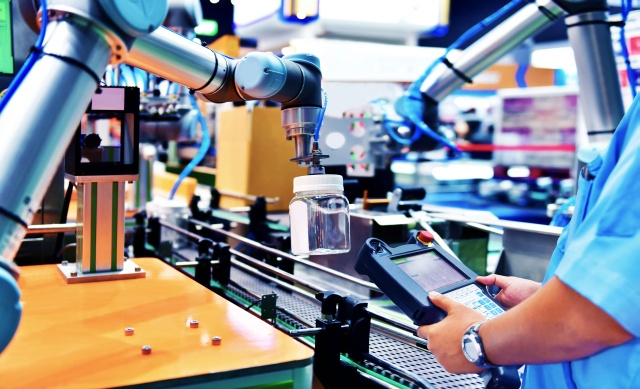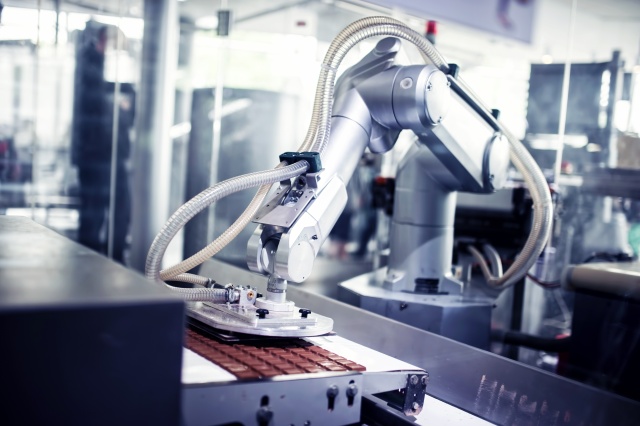Industry Thought Leadership
Unlocking the Power of Industry 4.0 with 5G
March, 2021Why is 5G such a good fit for manufacturing?
Whereas 4G was all about enhanced mobile broadband and spawned a host of new applications like Uber and Spotify, 5G is all about mission critical applications like remote surgery, driverless cars and massive machine type communications. Manufacturing sites typically use fixed local area networks (LAN) to connect things, as wireless technologies can struggle in environments with a lot of metal. However, this poses a few problems as fixed cables can’t be moved easily. Often production runs need to be reconfigured at short notice if there are supply issues or a surge in demand, and you can’t use LANs for retrofitting sensors as they are a trip hazard in a busy factory. So, a good, reliable, low-latency cellular technology using indoor cells is very attractive; and this is where 5G comes in.
Using 5G to enhance manufacturing operations
Industry 4.0 is all about driving efficiency, something called the OEE score, which stands for Overall Equipment Effectiveness. This is calculated by multiplying three things: what percentage of my machines are available at any given time, of these what percentage are performing as they should be and of these what percentage are producing good quality products. 5G can be used to reliably and securely connect new sensors to measure things like vibration, pressure and temperature to help predict equipment failures to improve the OEE score. 5G can also be used to monitor Computer Numerical Control (CNC) machines. CNC machines often create intricate designs in metal and are controlled by a computer. If there is any suggestion that there is a problem, they need to be shut down very quickly (within a tenth of a second) otherwise the damage can be more than £50,000. Traditionally PCs have been strapped to each machine tool to manage these shutdowns, but with the low latency and high availability of 5G, we now have a viable more cost-effective alternative.

New developments in worker safety
5G with its low latency and excellent availability is a great enabler for what we call Mixed Reality (MR). As experts retire, or become less able to travel, it’s often necessary for less experienced staff to resolve problems themselves. Increasingly Augmented Reality (AR) headsets are being used to allow experts to remotely instruct staff on site. Whilst this can be done over 4G, the number of dropouts and high latency can make the experience frustrating and potentially unsafe for the person being supervised. Also, increasingly, workers and robots are co-existing in close proximity; for instance, a robot might lift a heavy part over a worker’s head while they fit it into place. As the robot assistant moves around, having a reliable low latency technology like 5G is key to avoiding any accidents.
5G can also be used to support Virtual Reality (VR) training, which has been found to be far more effective in terms of health and safety than less immersive technologies. As VR is so realistic, worse cases scenarios can be played out before the trainee’s eyes, leaving far more of a lasting impression than classroom-based warnings.

How has coronavirus changed things?
Coronavirus has accelerated the digitisation of manufacturing, and interest in using 5G. Traditionally, people have been flown in to fix equipment, or to even carry out routine activities. For example, one food producer would fly in people from another country to clean all the pipes in its ice cream production lines following a shut down. This is currently not possible, and, in future, the way things have been done in the past is likely to change. Consequently, we are seeing an increased focus on factories being more self-sufficient and relying on collaboration tools designed for ‘blue collar’ workers. 5G will be a key enabler, driving efficiencies and supporting employees as they collaborate.

Looking to the future
In the next few years, we expect to see 5G being widely deployed in manufacturing, eclipsing private LTE due to its low latency, high availability and higher bandwidth attributes. Several new developments will further facilitate this. The use of mm wave spectrum will support up to 10Gbps connectivity over short distances, whilst network slicing will enable different quality of service levels to be offered over public networks to complement the existing private networks. OpenRAN (Radio Access Networks) will encourage a wide range of innovative companies to join the big three in offering more choice, more virtualisation and greater flexibility for customers. Finally, we will start to see greater convergence between 5G, WIFI 6 and, eventually, fixed networks to provide a seamless experience for users.

